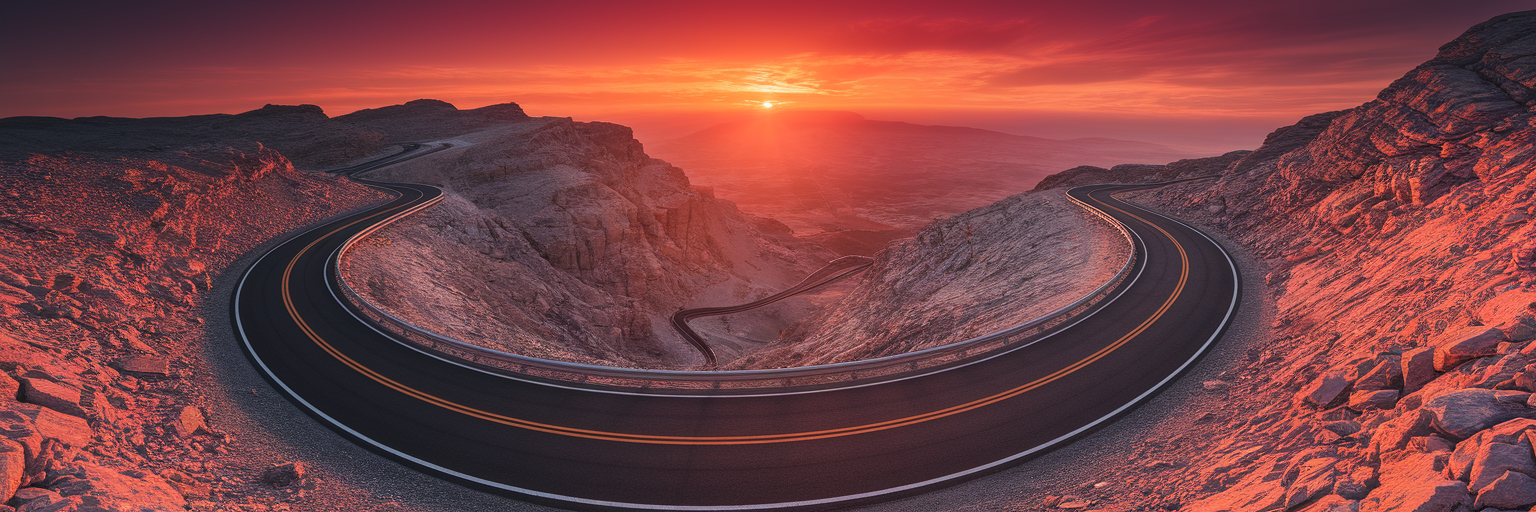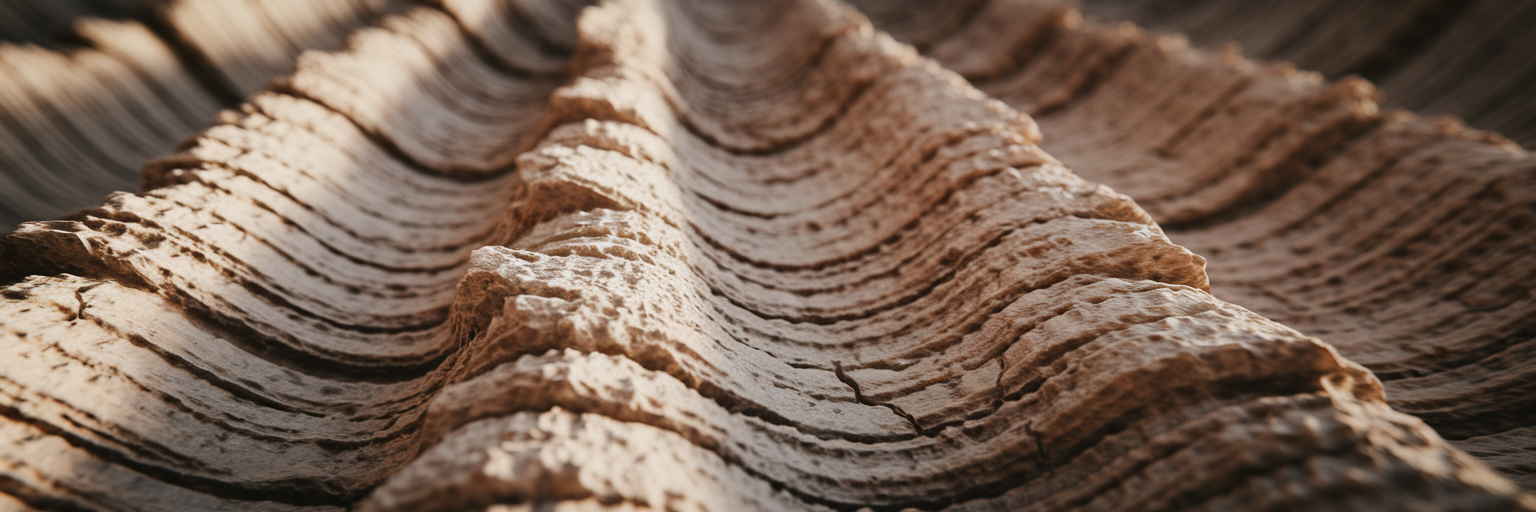Abu Dhabi’s Majestic Natural Watchtower
Rising 1,249 metres from the desert floor, Jebel Hafit is an imposing natural landmark. As Abu Dhabi’s highest peak, it stands as a silent watchtower on the border with Oman, a rugged counterpoint to the lush oasis of Al Ain below. This contrast is what makes a visit so compelling: the organised greenery of the ‘garden city’ sprawls out from the base of this ancient, weathered rock.
A trip to its summit offers more than just a photo opportunity. It is a journey through geological time, with significant fossil discoveries revealing a history stretching back millennia. This Jebel Hafit mountain guide is designed to help you experience its most breathtaking moments, when the rising or setting sun transforms the landscape into a canvas of light and shadow.
The Panoramic Spectacle from the Summit
Reaching the top of Jebel Hafit, the first thing you notice is the shift in atmosphere. The air is cooler, the city’s hum fades into a profound silence, and a sense of tranquility takes over. From this vantage point, the world unfolds in a stunning 360-degree panorama. To one side, you see the carefully planned city of Al Ain, its green parks and date palm plantations laid out like a map. It is here you will find some of the best views in Al Ain, a unique perspective on the city’s design.
Turn your gaze in the other direction, and the view transforms completely. The organised city gives way to an endless expanse of desert, its rolling dunes stretching towards the distant Hajar mountain range in Oman. The sheer scale of the landscape is humbling. You are not just looking at a view, you are experiencing the immense geography that has shaped this region for millions of years, feeling the quiet power of the mountain beneath your feet.
Planning Your Sunrise Visit
Witnessing a Jebel Hafit sunrise requires a commitment to an early start, but the reward is a moment of pure serenity. The key is timing. To ensure precise planning, visitors should consult a reliable source for daily Jebel Hafit sunrise times, as they change throughout the year. According to Time and Date, sunrise in late August, for example, is around 5:55 AM. Plan to arrive at the summit at least 30 to 45 minutes before this to experience the full spectacle.
The dawn unfolds in a distinct sequence:
- First comes the pre-dawn ‘blue hour’, when the landscape is bathed in deep, cool tones and a quiet stillness.
- Next, the first hints of pink and orange appear on the horizon, slowly pushing back the darkness.
- Finally, the sun emerges over the distant mountains, casting its first golden rays across the valley.
To make the experience more comfortable, dress in layers to combat the pre-dawn chill and consider bringing a thermos of hot coffee. For the physically adventurous, a sunrise hike offers a challenging but deeply rewarding way to greet the day. This quiet, solitary experience is one of the most memorable things to do in Al Ain. For those looking for other unique dawn experiences, a Dubai sunrise desert safari offers a different perspective on the region’s beauty.
The Magic of a Jebel Hafit Sunset
While the sunrise is a quiet, solitary affair, the sunset at Jebel Hafit is a more social and dramatic spectacle. The quality of light is entirely different. Instead of the soft morning pastels, the evening brings an intense, warm golden glow that saturates the entire landscape. As the sun descends, it casts long, dramatic shadows that sculpt the mountain’s rugged features, revealing textures and contours that are invisible in the harsh midday light.
The visual journey begins in the late afternoon and continues through dusk, culminating in a truly magical moment. As the last sliver of sun disappears, the city lights of Al Ain begin to sparkle to life below, creating a twinkling carpet against the darkening desert. This experience is often shared by families and groups of friends who gather at the viewpoints to unwind and watch the day come to a close. It is a relaxed, communal event that offers a powerful and accessible way to connect with the landscape.
| Aspect | Sunrise Experience | Sunset Experience |
|---|---|---|
| Atmosphere | Quiet, serene, and solitary | Social, relaxed, and often busier |
| Light & Colours | Cool blues transitioning to soft pinks and bright oranges | Intense golden and deep red hues |
| Photography Focus | Clean, crisp light; misty valleys | Long shadows, dramatic textures, city lights |
| Preparation | Requires a very early start; dress in warm layers | More accessible timing; still requires layers for the evening chill |
A Photographer’s Guide to the Mountain
For photographers, Jebel Hafit is a playground of light and landforms. Capturing its beauty, especially during the golden hours, requires a bit of preparation. Excellent sunset photography Abu Dhabi starts with the right equipment. Consider bringing:
- A sturdy tripod: Essential for stability during the low-light conditions of sunrise and sunset, ensuring sharp images.
- A wide-angle lens: A lens like a 16-35mm is perfect for capturing the immense scale of the landscape and the vastness of the sky.
- A telephoto lens: A 70-200mm lens allows you to isolate details, such as the winding road, distant dunes, or the texture of the rock formations.
From a compositional standpoint, the snaking road that climbs the mountain serves as a perfect leading line, drawing the viewer’s eye into the frame. Experiment with different pull-offs on the way up to find unique angles. Understanding the light is also critical. The ‘golden hour’, the period shortly after sunrise or before sunset, provides warm, soft light. The ‘blue hour’, the time just before sunrise or after sunset, offers cool, moody tones that are ideal for capturing the city lights as they begin to twinkle.
Beyond the Views: The Mountain’s Ancient Story
The breathtaking views from Jebel Hafit are just one part of its story. The mountain itself is a geological archive, its rocks weathered over millennia. It holds the secrets of a time when this entire region was submerged under the ancient Tethys Ocean. Significant fossil discoveries, including corals and other small marine creatures, have been found embedded in its limestone, providing a direct link to this deep past. Understanding this adds a profound layer of context to your visit; you are watching a timeless sunrise over a landscape that was once an ocean floor.
This ancient history is not just geological. At the base of the mountain, the Jebel Hafit Desert Park is home to a collection of 5,000-year-old beehive-shaped tombs, marking one of the earliest human settlements in the area. For those captivated by the desert’s ancient allure, an overnight desert safari in Dubai offers another way to connect with the region’s timeless landscapes.
How to Reach the Summit
The journey to the top is an experience in itself. The primary way to ascend is by car or motorbike via the Jebel Hafit Mountain Road. This road is widely regarded as one of the world’s great scenic drives, with its smooth tarmac, sweeping curves, and dramatic hairpin turns. There are several designated viewing pull-offs along the way, each offering a slightly different perspective of the landscape below.
While driving is the most common method, cycling up the mountain is another option, though it should not be underestimated. The steep, sustained gradient presents a serious athletic challenge suitable only for very fit and experienced cyclists. While the mountain drive is a unique escape, those interested in exploring urban marvels can consider a Dubai city tour for a different kind of adventure.
Essential Tips for a Memorable Trip
To ensure your visit to Jebel Hafit is smooth and enjoyable, a little preparation goes a long way. Keep these final points in mind before you head out:
- Dress in layers: The temperature at the summit can be 10-15 degrees Celsius cooler than in the city below, especially before sunrise or after sunset. A jacket is highly recommended.
- Bring essentials: Amenities at the top are limited. Pack plenty of water, some snacks, and ensure your phone and camera are fully charged to capture the moments.
- Explore different viewpoints: While the main car park at the summit offers a fantastic view, the pull-offs on the ascent provide unique angles and are often less crowded.
- Practice responsible tourism: The mountain is a precious natural environment. Please take all your litter with you and stay on marked paths to help preserve its beauty for future visitors.
For more travel insights and ideas for adventures across the UAE, our blog offers a wealth of information to help you plan your next trip.


